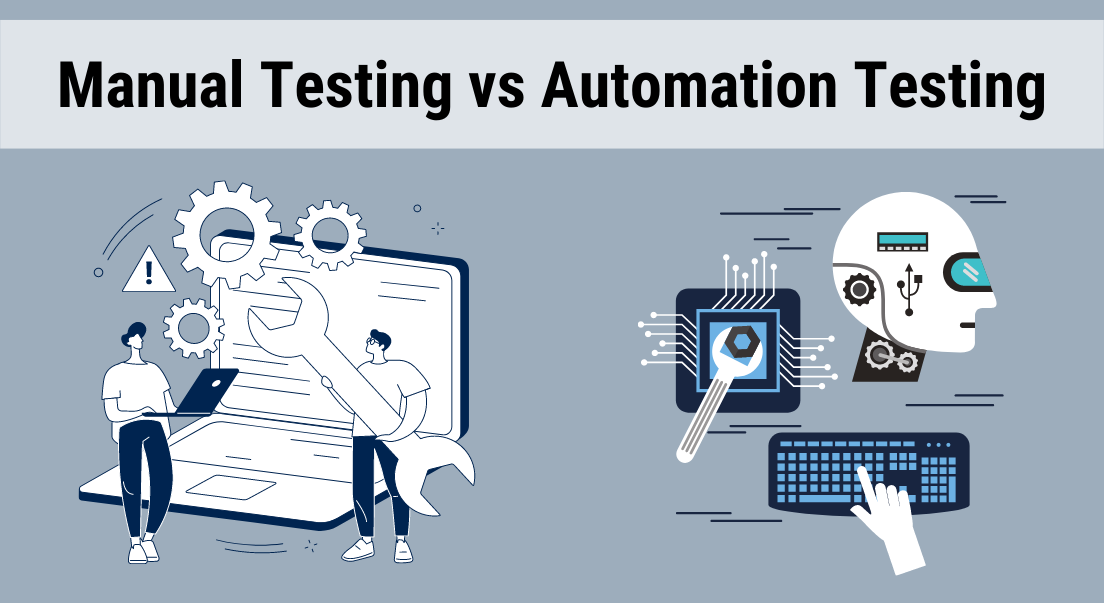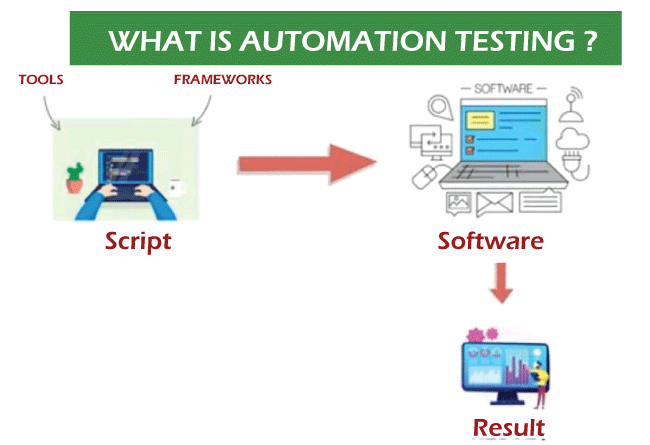Picking the Right Equipment for Effective Automation Testing Solutions
Picking the Right Equipment for Effective Automation Testing Solutions
Blog Article
From Handbook to Automated Screening: A Comprehensive Guide to Transitioning Efficiently and Properly
In the world of software program testing, the shift from guidebook to automated processes has ended up being an increasingly crucial change for organizations seeking to improve effectiveness and accuracy in their screening methods. As innovation proceeds to advance, the need for effective and seamless automated testing approaches has actually never ever been much more pressing. The journey from handbook to automated screening is not without its difficulties, but when approached tactically and with a clear plan in mind, the benefits can be considerable - automation testing. In this thorough overview, we will certainly explore essential steps and considerations vital for a successful transition, from the initial option of tools to the integration of automation right into existing workflows. Keep tuned to reveal the insights that will certainly aid lead the way for a smoother and much more efficient testing process.
Advantages of Automated Evaluating
Automated testing provides countless advantages, boosting efficiency and accuracy in software program advancement procedures. One primary benefit is the substantial reduction in testing time. Automated examinations can be run at the same time on numerous devices and running systems, dramatically speeding up the testing phase contrasted to manual testing. This raised efficiency permits faster feedback on the high quality of the software program, making it possible for developers to recognize and address issues quickly.
In addition, automated testing ensures a higher level of accuracy in discovering flaws. Given that automated tests follow predefined manuscripts, human mistake is minimized, leading to more dependable examination outcomes. Uniformity in screening is likewise enhanced, as automated examinations implement the same steps exactly each time they are run. This uniformity is vital in making sure that all capabilities of the software program are extensively examined, lowering the likelihood of unnoticed insects sliding with to manufacturing.
Selecting the Right Tools

First of all, analyze your objectives and demands. Recognize the scope of your task, the technologies entailed, and the capability of your group. This analysis will aid you determine the capabilities and functions you require in your screening devices.
Secondly, consider the compatibility of the tools with your existing systems and processes. Smooth assimilation with your existing software application advancement lifecycle is necessary to ensure a smooth shift to automation.
In addition, review the scalability and versatility of the tools. As your screening needs evolve, the devices ought to be able to adjust and accommodate adjustments successfully.
Lastly, consider the support and community around the devices. When carrying out automated testing, robust assistance and an active customer area can offer valuable sources and help. By thoroughly thinking about these facets, you can choose the right tools that line up with your requirements and established the look at this now phase for a Check This Out successful change to automated testing.
Creating Effective Examination Manuscripts

When crafting test manuscripts, it is necessary to think about the specific needs of the software program being evaluated and ensure that the manuscripts attend to all crucial capabilities. Clear and detailed calling conventions for test scripts and examination situations can enhance readability and maintainability. In addition, integrating mistake handling mechanisms within the test manuscripts can help in determining and addressing concerns promptly.
Moreover, arranging test scripts right into modular components can enhance reusability and scalability, reducing redundancy and improving performance in test script upkeep. Regular evaluations and updates to examine scripts are important to keep rate with developing software program requirements and performances. By adhering to these principles, testers can produce durable and effective test manuscripts that add considerably to the success of automated screening processes.
Integrating Automation Into Workflows
Effective combination of automation devices right into existing operations boosts and improves processes efficiency within software program development cycles. When incorporating automation into process, it is critical to identify repetitive tasks that can be automated to save time and reduce human error. By seamlessly integrating automated testing tools like Selenium or Appium into the software development lifecycle, teams can achieve faster feedback on code changes, leading to quicker bug discovery and resolution. This assimilation permits continual screening throughout the advancement procedure, guaranteeing that any issues are recognized beforehand, causing higher software quality. Furthermore, automation can be made use of to cause examinations immediately after each code dedicate, supplying immediate recognition and liberating testers to concentrate on more complicated situations. Bonuses Proper assimilation of automation devices calls for cooperation between development, screening, and procedures teams to develop a unified operations that maximizes effectiveness and effectiveness in supplying high-grade software program products.
Making Sure a Smooth Transition
Effectively transitioning to automated screening entails meticulous planning and mindful implementation to make best use of and minimize interruptions effectiveness in the software program growth process - automation testing. To ensure a smooth shift, it is necessary to begin by performing an extensive evaluation of the present screening procedures and recognizing areas where automation can bring the most significant benefits. Engaging with all stakeholders early on in the process, including developers, testers, and project supervisors, is crucial for garnering assistance and buy-in for the automation campaign
Communication is key throughout this change stage. Clear interaction of the objectives, advantages, and expectations of automated testing helps to manage any kind of resistance or problems that might emerge. Additionally, providing adequate training and resources for group participants to upskill in automation devices and methods is important for guaranteeing a successful change.

Verdict
Finally, transitioning from manual to automated testing uses numerous benefits, including boosted performance and integrity. By selecting the suitable devices, creating reliable test scripts, and integrating automation seamlessly into workflows, companies can make certain a smooth and successful shift. It is important to welcome automation as a valuable asset in software application testing procedures to improve total quality and efficiency.
In the world of software testing, the shift from handbook to automated processes has actually come to be a significantly vital transition for companies looking for to boost performance and accuracy in their testing methods. Automated tests can be run all at once on numerous tools and running systems, drastically speeding up the testing phase compared to hands-on testing. Consistency in testing is also improved, as automated tests implement the same steps precisely each time they are run.To guarantee the successful implementation of chosen testing devices, the development of effective examination scripts plays a crucial duty in verifying the performance and efficiency of automated procedures - automation testing. By following these principles, testers can develop effective and durable test scripts that add considerably to the success of automated screening procedures
Report this page